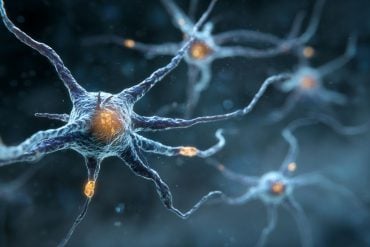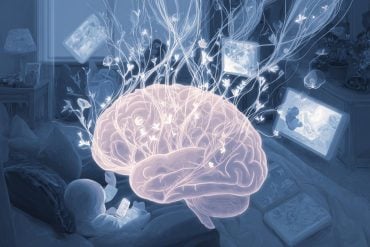Summary: Researchers have created over 400 distinct types of human nerve cells in vitro, vastly expanding the diversity available for neuroscience research. By systematically combining genetic engineering with morphogen signaling molecules, they mimicked the intricate variety of neurons found in the brain.
This breakthrough opens the door for more precise disease models and drug testing, moving beyond the limited cell types previously used. The next challenge is refining the method to reliably produce one specific neuron type per experiment.
Key facts:
- Unprecedented Diversity: Over 400 neuron types created in the lab reflect real brain complexity.
- Disease Modeling: Enables more accurate in-vitro models for neurological disorders.
- Next Steps: Optimizing conditions to isolate specific neuron types consistently.
Source: ETH Zurich
Nerve cells are not just nerve cells. Depending on how finely we distinguish, there are several hundred to several thousand different types of nerve cell in the human brain according to the latest calculations.
These cell types vary in their function, in the number and length of their cellular appendages, and in their interconnections. They emit different neurotransmitters into our synapses and, depending on the region of the brain – for example, the cerebral cortex or the midbrain – different cell types are active.

When scientists produced nerve cells from stem cells in Petri dishes for their experiments in the past, it was not possible to take their vast diversity into account. Until now, researchers had only developed procedures for growing a few dozen different types of nerve cell in vitro.
They achieved this using genetic engineering or by adding signalling molecules to activate particular cellular signalling pathways. However, they never got close to achieving the diversity of hundreds or thousands of different nerve cell types that actually exists.
“Neurons derived from stem cells are frequently used to study diseases. But up to now, researchers have often ignored which precise types of neuron they are working with,” says Barbara Treutlein, Professor at the Department of Biosystems Science and Engineering at ETH Zurich in Basel. However, this is not the best approach to such work.
“If we want to develop cell culture models for diseases and disorders such as Alzheimer’s, Parkinson’s and depression, we need to take the specific type of nerve cell involved into consideration.”
Systematic screening was the key to success
Treutlein and her team have now successfully produced over 400 different types of nerve cell. In doing so, the scientists have paved the way for more precise basic neurological research with cell culture experiments.
The ETH researchers achieved this by working with a culture of human induced pluripotent stem cells that had been generated from blood cells. In these cells, they used genetic engineering to activate certain neuronal regulator genes and treated the cells with various morphogens, a special class of signalling molecules.
Treutlein and her team took a systematic approach, using seven morphogens in different combinations and concentrations in their screening experiments. This resulted in almost 200 different sets of experimental conditions.
Morphogens
Morphogens are messengers that are known from research into embryonic development. They are not distributed uniformly within an embryo but occur in a variety of concentrations forming spatial patterns.
In this way, they define the position of cells within the embryo, for example whether a cell is near the body axis or in the back, abdomen, head or torso. Accordingly, morphogens help to determine what grows where in the embryo.
The researchers used various analyses to prove that they had produced over 400 different types of nerve cell in their experiment. They examined the RNA (and therefore genetic activity) at the level of individual cells, as well as the external appearance of cells and their function: for example, which type of cell appendage they had in which quantities and which electric nerve impulses they emitted.
The researchers then compared their data with information from databases of neurons from the human brain. By doing this, they were able to identify the types of nerve cell that had been created, such as those found in the peripheral nervous system or brain cells and the part of the brain they come from, whether they perceive pain, cold or movement, and so on.
In-vitro neurons for active ingredient research
Treutlein clarifies that they are still a long way off producing all types of nerve cell that exist in vitro. Nonetheless, the researchers now have access to a much larger number of different cell types than they had before.
They would like to use in-vitro nerve cells to develop cell culture models for studying serious neurological conditions, including schizophrenia, Alzheimer’s, Parkinson’s, epilepsy, sleep disorders and multiple sclerosis.
Cell culture models of this kind are also of great interest in pharmaceutical research for testing the effects of new active compounds in cell cultures without animal testing, with the ultimate aim of one day being able to cure these conditions.
In the future, the cells could also be used for cell replacement therapy, which involves replacing sick or dead nerve cells in the brain with new human cells.
But there is a challenge to overcome before this can happen: the researchers often produced a mixture of multiple different types of nerve cell in their experiments. They are now working to optimise their method so that each experimental condition only produces one specific cell type. They already have some initial ideas as to how this might be achieved.
About this neuroscience research news
Author: Marianne Lucien
Source: ETH Zurich
Contact: Marianne Lucien – ETH Zurich
Image: The image is credited to Neuroscience News
Original Research: Closed access.
“Human neuron subtype programming via single-cell transcriptome-coupled patterning screens” by Barbara Treutlein et al. Science
Abstract
Human neuron subtype programming via single-cell transcriptome-coupled patterning screens
INTRODUCTION
Human excitatory and inhibitory neurons can be induced from pluripotent stem cells (PSCs) in vitro through forced expression of pioneer transcription factors. These induced neurons (iNs) are widely used for studying neural development, differentiation, and neurological diseases such as Alzheimer’s disease, Parkinson’s disease, and amyotrophic lateral sclerosis.
In addition, programmed neurons show promise for cell replacement therapies to restore function after neurological damage. Systematic strategies to expand the diversity of neuron types is essential for driving future breakthroughs.
RATIONALE
To create diverse neuron types in vitro, we propose that broadly expressed pro-neural transcription factors (TFs), such as NGN2 and ASCL1 combined with morphogens, can guide regional patterning across the central and peripheral nervous system.
RESULTS
We designed a systematic morphogen screening approach to explore how different morphogens work together with pro-neural TFs to generate different types of neurons from PSCs. Using high-throughput single-cell RNA-sequencing (scRNA-seq), we analyzed nearly 700,000 cells across 480 unique combinations of morphogen conditions. We identified diverse iN subtypes resembling those found in the human body, including neurons from the forebrain, midbrain, hindbrain, spinal cord, and peripheral nervous system.
These iNs also share characteristics with human neurons that produce neurotransmitters such as glutamate, GABA, dopamine, and acetylcholine. In addition, the diversity of iN subtypes is evident in their electrical activity patterns, suggesting that they are functionally distinct.
To understand how morphogens influence the formation of specific iN subtypes, we use scRNA-seq data to infer gene regulatory networks. We identified key TFs and their downstream target genes, collectively called regulons, that are activated by combinations of morphogens to guide neurons into specific subtypes. To verify our findings, we used genetic methods such as overexpression and CRISPR-Cas9 knockouts to perturb key TFs. When key TFs are absent, morphogens can no longer direct iNs into specific subtypes.
Conversely, overexpressing key TFs is sufficient to drive the formation of specific iN subtypes without morphogens. We also found that exposing PSCs to morphogens before inducing pro-neural TFs can activate regulons found in human neurons, generating iN subtypes that are more uniform and more closely resemble primary human neurons.
CONCLUSION
We expanded the diversity of human iNs generated in vitro and uncovered how cooperative signaling drives cell fate acquisition. We identified regulons that direct the emergence of iN subtypes, which will enable the targeted generation of pure cultures of specific neuron types in the future. Our dataset linking morphogens to cell fate outcomes is especially suited for predictive modeling to infer cell fates under novel conditions.
Our approach is generalizable to diverse cell types beyond neurons and holds great potential to advance understanding of human biology, disease mechanisms, and therapeutic innovation.







